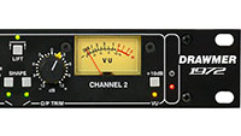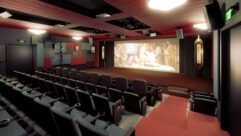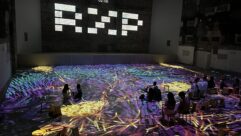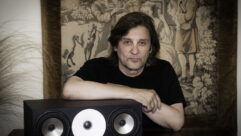1972 All Over AgainAlmost
Feb 1, 2002 12:00 PM,
Glen Ballou
IN THE EARLY 1970s, I DESIGNED A SOUND SYSTEM for a large sports complex in southern Connecticut as a sound contractor. Now, in 2002, I am a consultant to the acoustical consultant on a sound system for another large sports complex in southern Connecticut. Getting over the feeling of déjà vu, I realized that I had a good opportunity to see what has changed in the last 30 years.
Both projects required sound for sports events, graduations and rallies. The 1972 complex was 302 feet by 150 feet by 43 feet high in the center, totaling 1,708,112 cubic feet. The 2002 complex is 361 feet by 170 feet by 43 feet high, or 2,476,800 cubic feet. Each system specified cardioid and omni-directional dynamic and condenser microphones; and in 2002, wireless microphones were also needed.
In the 1972 system, a fixed 12-channel, solid-state mixer was mounted in the press box. In 2002, a portable 16-channel, solid-state mixer is employed and can be moved to the desired area: not much of a difference. In the 1972 system, solid-state, ⅓-octave filters and a separate signal delay were used. The 2002 system employs a combination equalizer/delay system. Again, not much of a change in 30 years.
But in the former system, all switching and setup happened through a jack panel and simple relay switching. The new system uses active matrixing. This is where we begin to see a big change. Also, the early system had loudspeakers that were multicell horns and large bass bins mounted in central and end clusters, plus 8-inch loudspeakers mounted under the balcony. The central cluster was used for sports, and the end and delayed central clusters were used for graduations, etc. The system was bi-amplified, and crossover was 500 Hz. The 2002 system consists of 46 full-range loudspeakers with integrated crossovers in a distributed array: a reasonably big change.
WHAT DO 30 YEARS OF PROGRESS REALLY MEAN?
in 1972, many architectural firms designed the building, placed the flowers and trees in the proper locations. They hired an HVAC consultant, a plumbing consultant and an electrical consultant. The latter was responsible for the sound system. You might have noticed nobody was responsible for room acoustics. The specifications for the sound system stated, “A sound system shall be installed in the complex for use at games and graduations.” Of course the electrical contractor did not want to know anything about the sound system except that it was cheap and he could make a profit on it, so his course of action was to hire a local sound system contractor to design and install the system.
In the 1970s, there was only a handful of companies making equipment capable of performing this job. There were no standards for input and output impedances and gain, so it was common that all of the equipment was made by one manufacturer. In the sports complex I designed in 1972, all equipment except the signal delay came from Altec Lansing.
Loudspeaker layout and coverage was plotted out manually on floor plans. Reverberation time, NAG and PAG, EAD, NOM, D1, D2, Ds and Do were all calculated manually or with sound-system slide rules and survey and analysis forms. Loudspeaker interference was not analyzed, but the systems often worked reasonably well in spite of this. (Distributed systems were seldom used because of cost.) The sound system was equalized with a real-time analyzer by placing the microphone in various locations and smoothing out the frequency response and filtering out feedback frequencies.
Remember, there was no acoustical consultant in the design stage. The sports complex had a reverberation time of 5.7 seconds empty and over 2.8 seconds with 3000 people. Percent articulation loss of consonants (Alcons) was not high on the priority list of the architect, nor were echoes. It was more important that the walls were the correct color. Fortunately, we could stuff some of the cells of the multicell horns to control directivity so the system worked fine, at least by 1972 standards.
THE DESIGN PROCESS IS ALMOST UNRECOGNIZABLE
in the new project, the architect is still using engineering firms as before, but, at least in our case, they also included an acoustical consultant. Now the room acoustics and the marriage of the sound system to the room are the responsibility of a knowledgeable expert. Hard ceilings are replaced with acoustic material, air-handling systems meet specified noise-level criteria, and sound systems are designed to complement the room acoustics, not to work in spite of them. Design tools have also changed. Programs like EASE now allow the design to be done on a computer with the outcome guaranteed (as long as the input is good). Loudspeaker coverage can be laid out in days rather than weeks, and interference patterns can be readily seen. In the 2002 complex, Alcons, delay between loudspeakers and source, delay between different loudspeakers and reverberation times are all considered together.
Since standards on input and output impedance and gain structure have improved in 30 years, the new system uses a myriad of components rather than just one brand. Now we can get the best of the many manufacturers. Switching is accomplished with digital matrixes and touchscreens. The 46 loudspeakers are laid out as a distributed system with eight zones, allowing the loudspeakers that are not required for a particular event to be turned off through the matrix. Coaches can use the sound system to coach their area only.
STRIDES IN FINE TUNING
no system is complete without the final tuning and tweaking. In 1972, there was minimum test gear. If the contractor was progressive, he had an RTA such as the Altec/Hewlett Packard 8050A with a 4-inch screen or an IVIE IE30A RTA, and he used a simple pink-noise generator plugged into one of the mixer inputs. He might even have equalized manually with a General Radio 1382 random noise generator and 1564A sound and vibration analyzer. Of course, this took time as each ⅓-octave had to be plotted on graph paper, the filters adjusted and the process repeated.
In the 1972 sports complex, the system was equalized with the HP 8050A and the IVIE IE30A in one day. The hardest part was our thinking we could equalize out reverberation! In a way, we reduced the effect of reverberation when we filtered out the low frequencies, not allowing them to build up through the sound system.
Today we have many pieces of test gear to tune and set up the system. Because we have software like EASE, we know what to expect in advance. Gone are the days of tedious measurements. We can balance the system, set output levels to each loudspeaker, adjust delays, and equalize with sophisticated test equipment such as Gold Line TEF and DSP30 RTA, the SIA Smart system, and the Meyer SIM system. All of these work with PCs, so information can be stored, retrieved and manipulated.
EDUCATION REMAINS CRUCIAL
most of these advances wouldn’t have happened if it weren’t for learning institutions like Synergetic Audio Concepts. Started by Don and Carolyn Davis after Don left Altec Lansing, Syn-Aud-Con provided students with a great background on impedance, gain structure, loudspeaker coverage and measurement, and system and room measurements. In 1972, only a handful of sound contractors and acousticians had taken Don’s clases, and they were the gurus of the field. When Don and Carolyn retired, Pat and Brenda Brown took over Syn-Aud-Con.
To date, thousands of contractors, manufacturers and acousticians have taken Syn-Aud-Con classes, raising the quality of sound systems throughout the world. To these people who give their knowledge and time, we are eternally grateful. We also have many more books and magazines today than we did 30 years ago, including S&VC and the just-published third edition of the 1552-page Handbook for Sound Engineers (a little plug for my book).
Incidentally, the 1972 sports complex still has all of the original equipment that we installed and tuned 30 years ago. So if you get called in to update a system, look carefully at the old system and learn from it; it may not be as bad as you’d think.
Glen Ballou owns Innovative Communications and is author of the third edition of The Handbook for Sound Engineers — The New Audio Cyclopedia.










